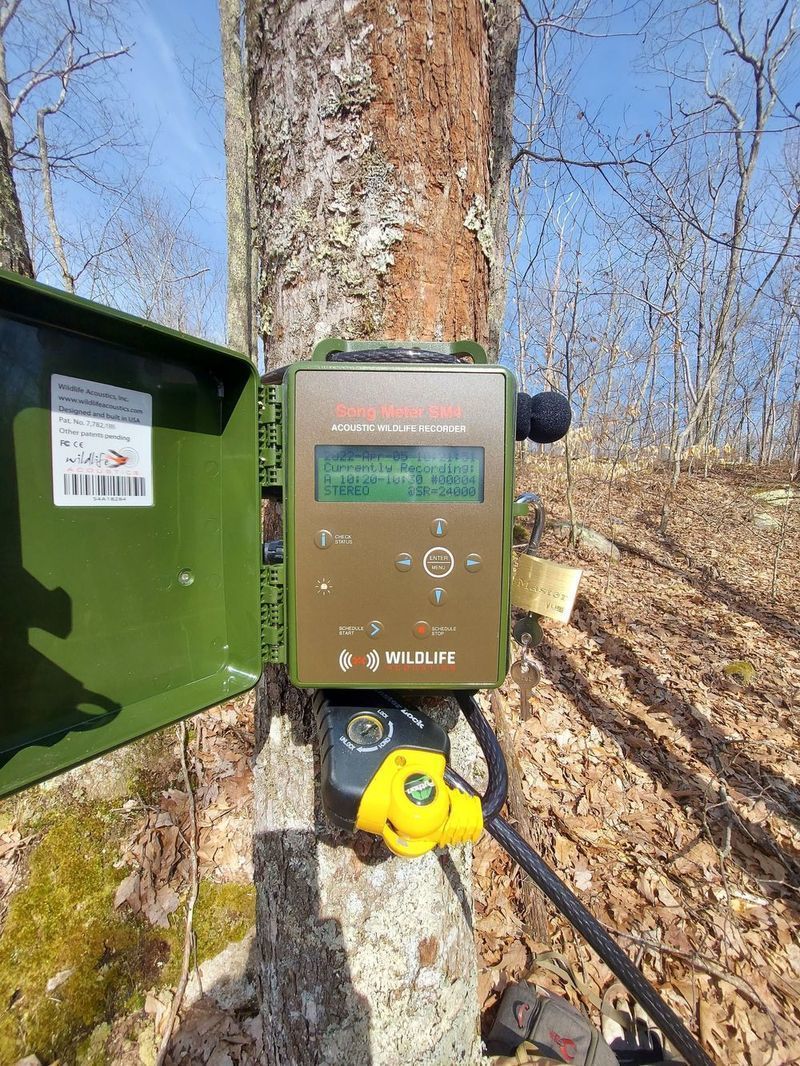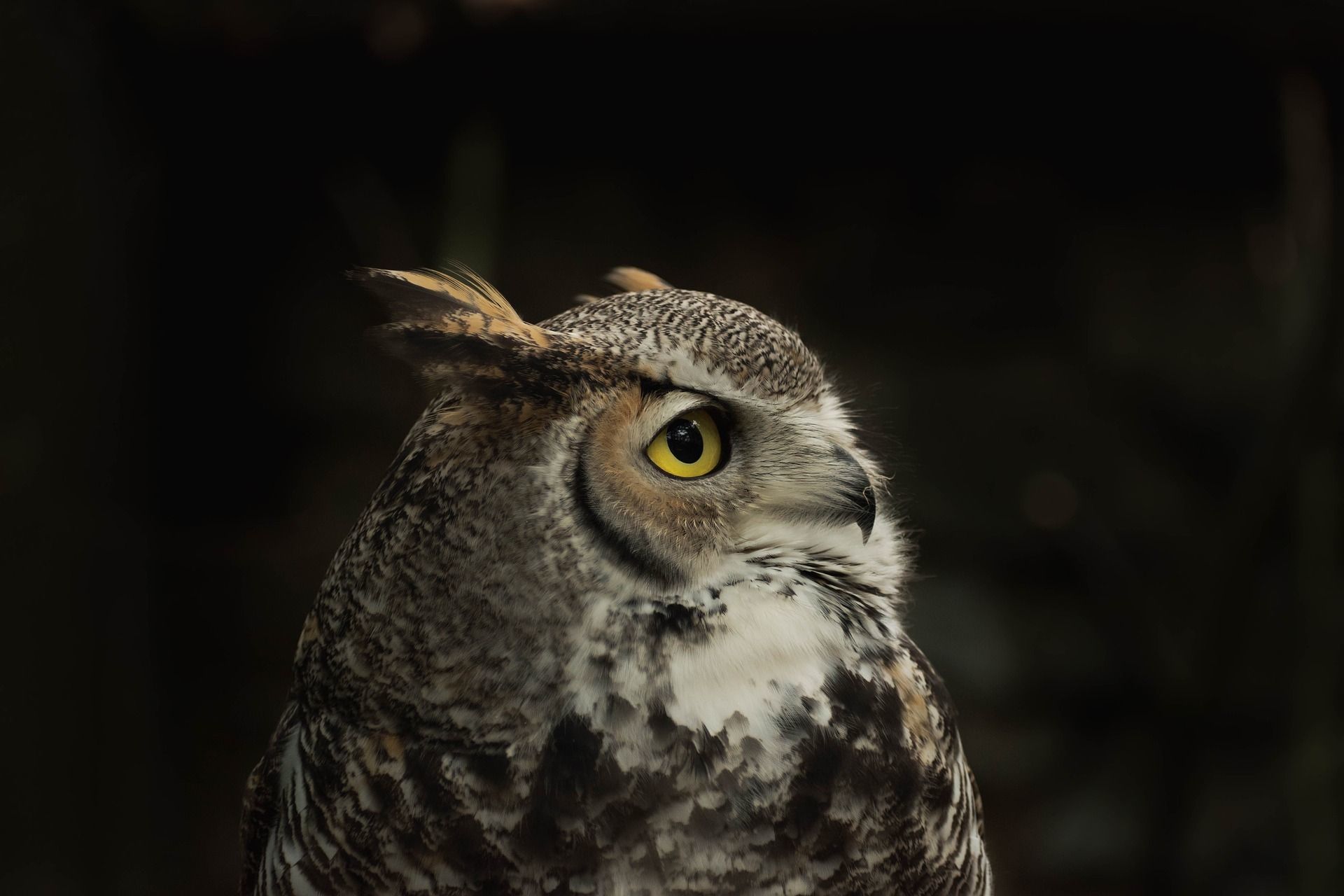April 2022
The Audubon Bird Research Email Newsletter provides you with monthly updates outlining the work we are doing as part of the scientific research initiative at the Audubon Society of Rhode Island. You will also receive emails when we are in need of volunteers for projects. Suggestions and questions regarding the newsletter can be sent to Dr. Charles Clarkson, Audubon Director of Avian Research, cclarkson@asri.org.
Sign up to get the Audubon Bird Research Newsletter in your email inbox!
Upcoming Avian Research at Audubon
For those of you that have been keeping up with the newly established Avian Research Initiative at Audubon, you know that we have been primarily focused on collecting baseline data of bird abundance and distribution across our wildlife refuges. This information is vital to our ability to track changes in these metrics through time as well as design conservation and management programs that have the greatest impact possible.
As this data collection continues through the migratory and breeding seasons, additional targeted research is underway which will work in tandem with these surveys to lend even more insight into the health of our habitats and their ability to provide for the needs of birds using protected open space. As one of the state’s largest conservation landholders, the data we collect on Audubon parcels can serve as a bellwether for the remainder of Rhode Island’s protected forests, wetlands and grasslands.
Beginning this Spring, the following two targeted research initiatives will commence at Audubon:
Acoustic Monitoring as a Tool for Effective Conservation
-
The use of Acoustic Recording Units (ARUs) in avian monitoring and research projects has grown dramatically as the technology has improved with respect to recorder durability and, especially, processing software (ARUs collect large sums of data and processing this information has historically been laborious). A project to understand species assemblage differences between three habitat types and refuges of varying size will provide information on the ability of our refuge complex to provide suitable migratory stopover and breeding habitat for birds.
Beginning in April, a total of 6 ARUs will be deployed on Audubon wildlife refuges. Two devices will be placed in each of the three most substantial habitat types that Audubon protects (Oak Forest, Forested Swamp and Mixed Deciduous/Coniferous Forest). For each habitat, one recorder will be placed in the single largest tract of habitat we protect while the second recorder will be placed in a tract that is of average size for that habitat across all Audubon properties.
ARUs will record from sunrise to sunset with a 30-min on/30-min off duty cycle. Over the course of both spring migration and the subsequent breeding season, these recorders will capture the suite of species moving through Audubon parcels during the period of migration and those that remain and establish breeding territories.
This information will prove vital at elucidating the ability of our wildlife refuges to provide birds with the requisite components of a habitat to refuel and breed. While we will not be investigating edge effect specifically during this research, ARUs will be used in a subsequent study to examine avian communities along a transect from habitat edge to interior.
-
This acoustic Recording Unit will automatically record bird song over the next three months. This will provide us a great deal of information on which species use Audubon parcels during spring migration and the breeding season.
Neonicotinoid Exposure to Birds on Refuges
Neonicotinoid Insecticides (NNIs) are known to impact the health and function of ecosystems within and adjacent to agricultural zones, where they are commonly applied to manage crop pests. Most research to date has focused on the ability of NNIs to impact the physiology of invertebrates (target and non-target species) and vertebrates (mammals, birds and fish) living within these ecosystems. Due to their high water-solubility and low soil-binding properties, NNIs have also been shown to contaminate aquatic environments where they can impact aquatic food webs. Many invertebrate species spend their larval stage in aquatic habitats where they can bioaccumulate sublethal amounts of organic chemicals and heavy metals present in these systems. When these insects emerge into the adjacent terrestrial habitats as adults, they are often consumed by birds that forage and nest in riparian zones. While no studies have investigated the accumulation and impacts of NNIs in these species, studies of methylmercury have shown that certain avian species can accumulate contaminants in high levels, impacting nesting success and survival.
-
Feather samples of birds using Audubon wildlife refuges will allow us to gauge whether NNIs are pervasive across the landscape, including on large patches of protected habitat. As waterways are capable of carrying NNIs beyond the agricultural areas where they are applied, this research will help determine the threats to species nesting on Audubon properties from these insecticides, as all of our properties are “downstream” of agricultural zones within the region. This summer, Audubon will form a partnership with URI to create an Avian Research Collaborative Lab (ARCL), which will enable us to analyze samples for neonicotinoid insecticides along with other environmental contaminants, such as microplastics.
-
Feathers are capable of serving as biomonitoring tools as they accumulate toxins such as heavy metals and pesticides during their growth.
Who is that?
-
Beginning this week (April 12), teams of volunteers will be heading out into Audubon wildlife refuges after dark to collect data on nocturnal bird species (American Woodcock, nightjars and owls). This taxon of birds is understudied and often under sampled in large census projects such as the one Audubon is undertaking. The data obtained from these surveys will aid in completing the full picture of the bird populations using our wildlife refuges. Without this information, our survey results would essentially be akin to a book with a number of missing chapters! Stay tuned to find out which denizens of the night call Audubon wildlife refuges home.
-





















